Model Context Protocol (MCP) finally gives AI models a way to access the business data needed to make them really useful at work. CData MCP Servers have the depth and performance to make sure AI has access to all of the answers.
Try them now for free →How to Easily Query SharePoint Data in OpenOffice Base
Connect to SharePoint data in OpenOffice Base using the CData ODBC Driver for SharePoint and generate reports with live data insights.
Apache OpenOffice Base is a versatile, free database tool that makes connecting and managing data easy. With CData ODBC Driver for SharePoint, you can seamlessly integrate and query live SharePoint data, bringing real-time insights directly into OpenOffice.
This guide simplifies the setup, showing you how to connect SharePoint to OpenOffice Base so you can easily generate reports, analyze trends, and make informed decisions right within your familiar workspace.
About SharePoint Data Integration
Accessing and integrating live data from SharePoint has never been easier with CData. Customers rely on CData connectivity to:
- Access data from a wide range of SharePoint versions, including Windows SharePoint Services 3.0, Microsoft Office SharePoint Server 2007 and above, and SharePoint Online.
- Access all of SharePoint thanks to support for Hidden and Lookup columns.
- Recursively scan folders to create a relational model of all SharePoint data.
- Use SQL stored procedures to upload and download documents and attachments.
Most customers rely on CData solutions to integrate SharePoint data into their database or data warehouse, while others integrate their SharePoint data with preferred data tools, like Power BI, Tableau, or Excel.
For more information on how customers are solving problems with CData's SharePoint solutions, refer to our blog: Drivers in Focus: Collaboration Tools.
Getting Started
Overview
Here is an overview of the steps:
- CONFIGURE: Configure the DSN for SharePoint data in the CData ODBC Driver for SharePoint, using the required connection properties.
- CONNECT: Set up the ODBC connection in OpenOffice Base using the configured DSN.
- IMPORT: Once connected, review the available metadata and tables.
- CREATE: Create a report based on the queried SharePoint data data.
Configure the SharePoint DSN Using the CData ODBC Driver for SharePoint
To start, configure the DSN (Data Source Name) for SharePoint data in your system using the CData ODBC Driver for SharePoint. Download and install a 30-day free trial with all the features from here.
Once installed, launch the ODBC Data Source Administrator:
- On Windows: Search for ODBC Data Source Administrator in the Start menu and open the application.
- On Mac: Open Applications, go to Utilities, and select ODBC Manager.
- On Linux: Use the command line to launch ODBC Data Source Administrator or use unixODBC if installed.
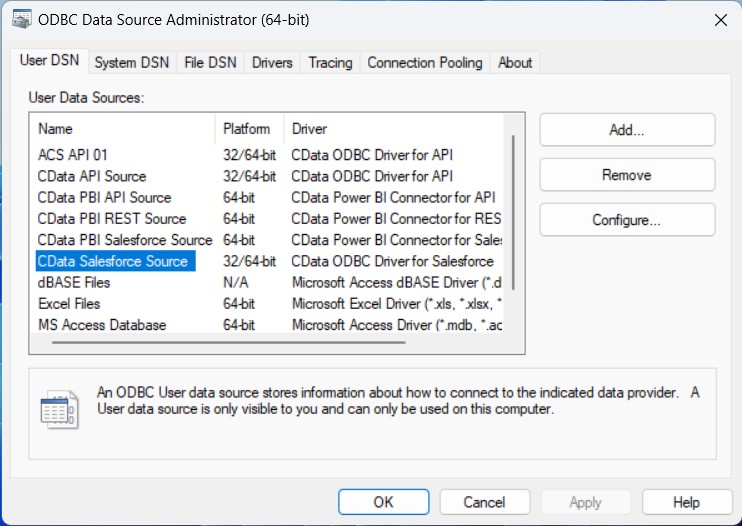
Once launched, double-click on the CData SharePoint data Source and enter the required values to establish a connection:
Set the URL property to the base SharePoint site or to a sub-site. This allows you to query any lists and other SharePoint entities defined for the site or sub-site.
The User and Password properties, under the Authentication section, must be set to valid SharePoint user credentials when using SharePoint On-Premise.
If you are connecting to SharePoint Online, set the SharePointEdition to SHAREPOINTONLINE along with the User and Password connection string properties. For more details on connecting to SharePoint Online, see the "Getting Started" chapter of the help documentation
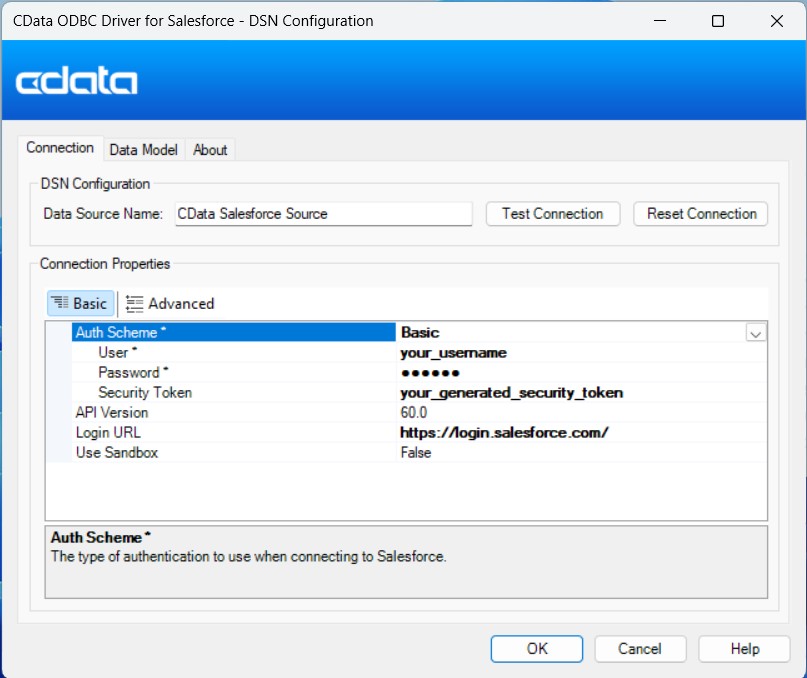
Setup an ODBC Connection in OpenOffice Base
Once you've set up the DSN, it's time to connect to it in OpenOffice Base and start querying data:
- Launch OpenOffice Base and select Database from the home screen.
- In the Database Wizard, choose ODBC from the 'Connect to an existing database' option and click Next.
- Click Browse to locate and select the DSN you created, then click OK.
- Enter the username associated with the DSN, click Test Connection to verify, and then click Next.
- Finally, click Finish to save the new database file to your desired directory. This will connect OpenOffice Base to your live SharePoint data data, ready for querying and analysis.
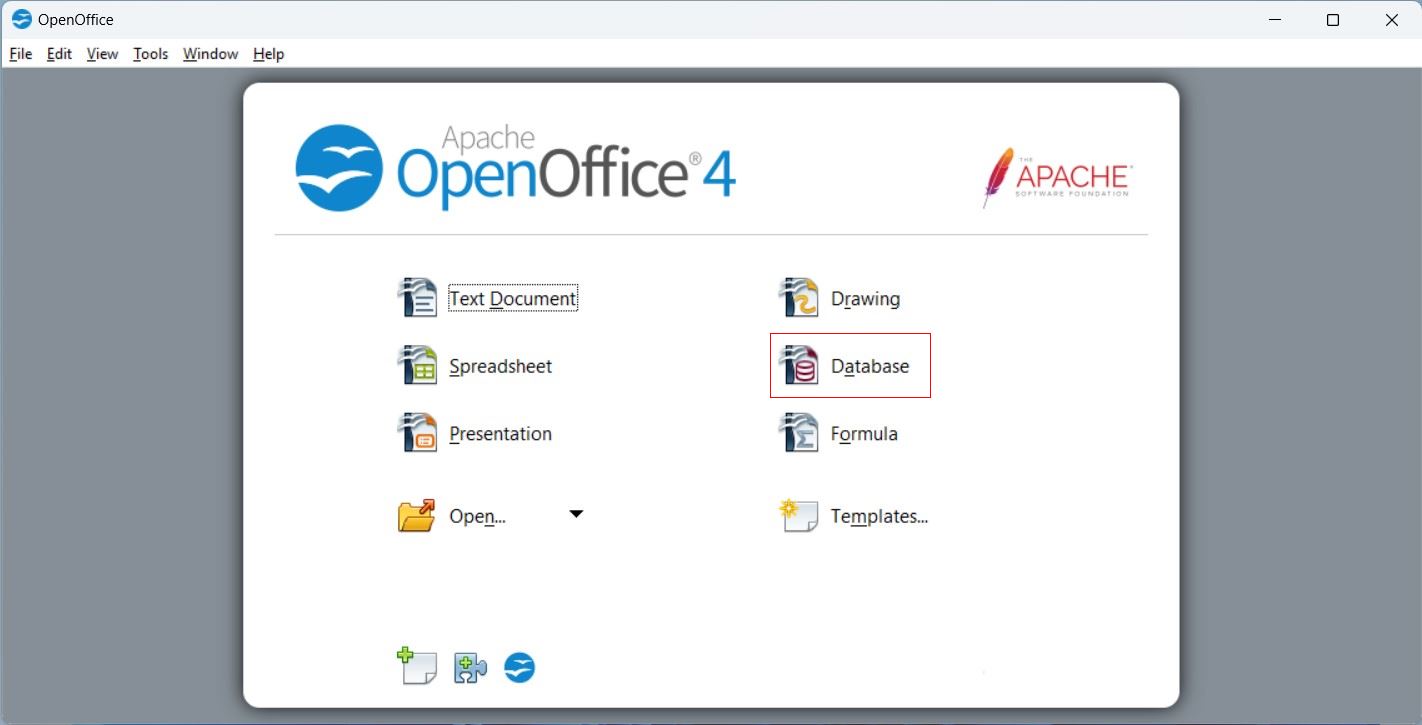
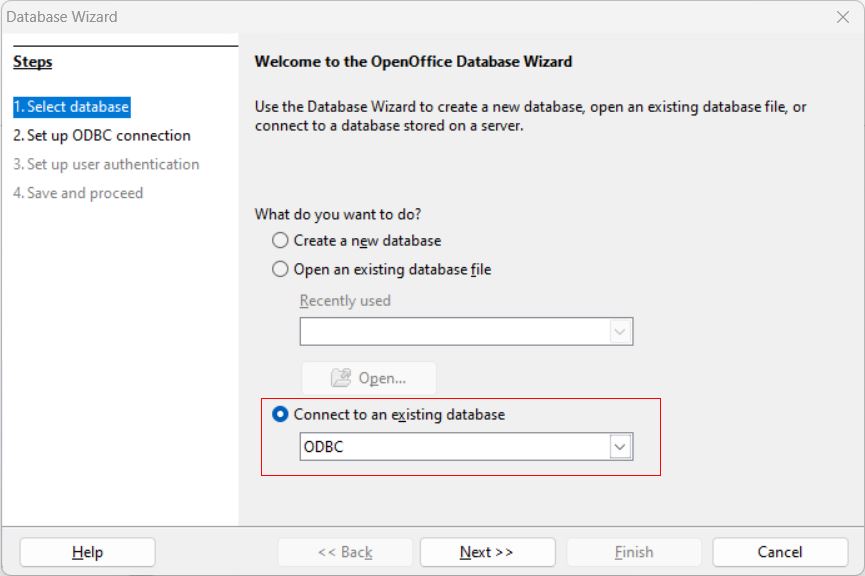
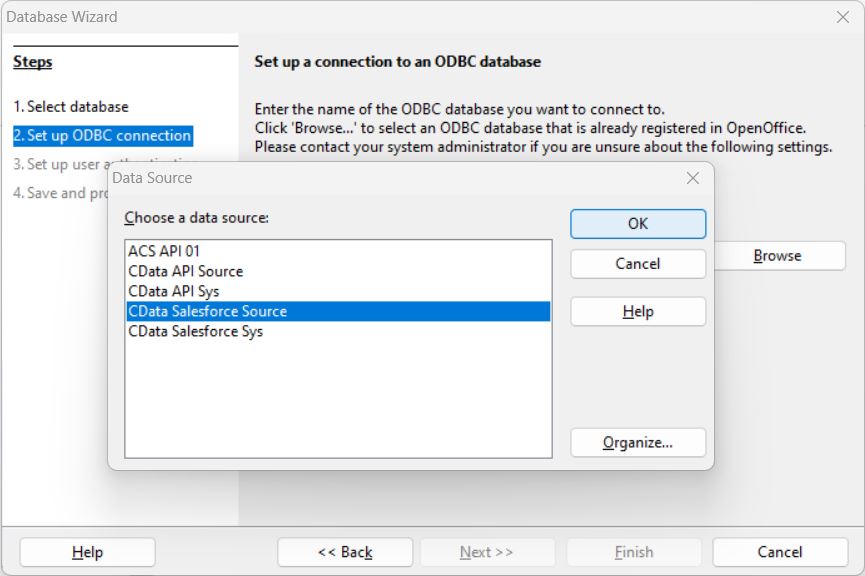
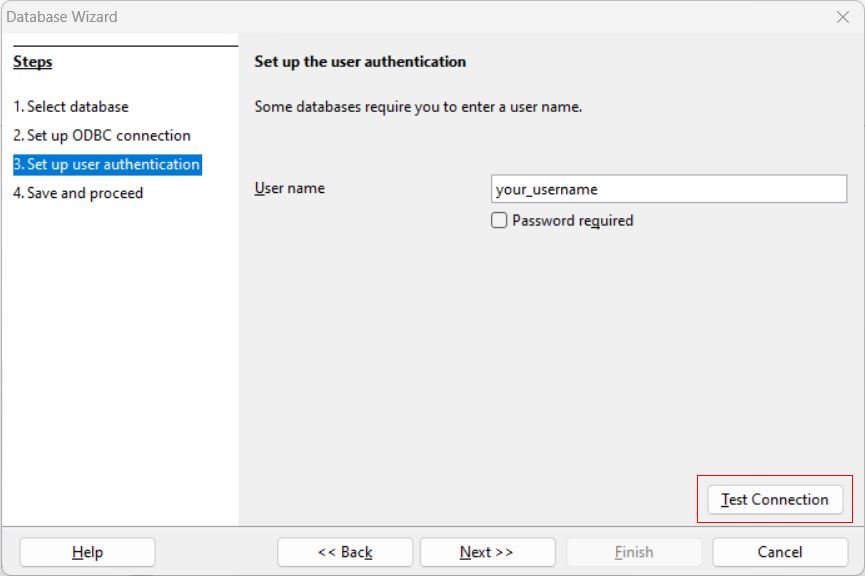
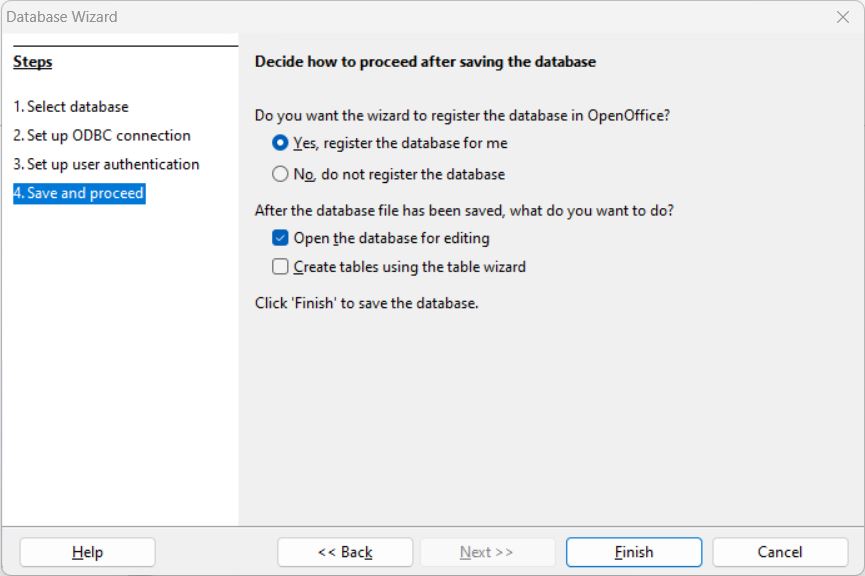
Your connection is now established — ready to query and analyze data seamlessly within OpenOffice Base.
Review the Metadata and Tables
After the database file is created and the connection is established, the table list will automatically display all available SharePoint data objects.
- Review the SharePoint data Object List: In the left pane, click on Tables to view the SharePoint data objects now available within OpenOffice Base.
- View Object Data: Click on any object to view its contents. The SharePoint data data will display directly within OpenOffice Base, allowing you to review records and fields with ease.
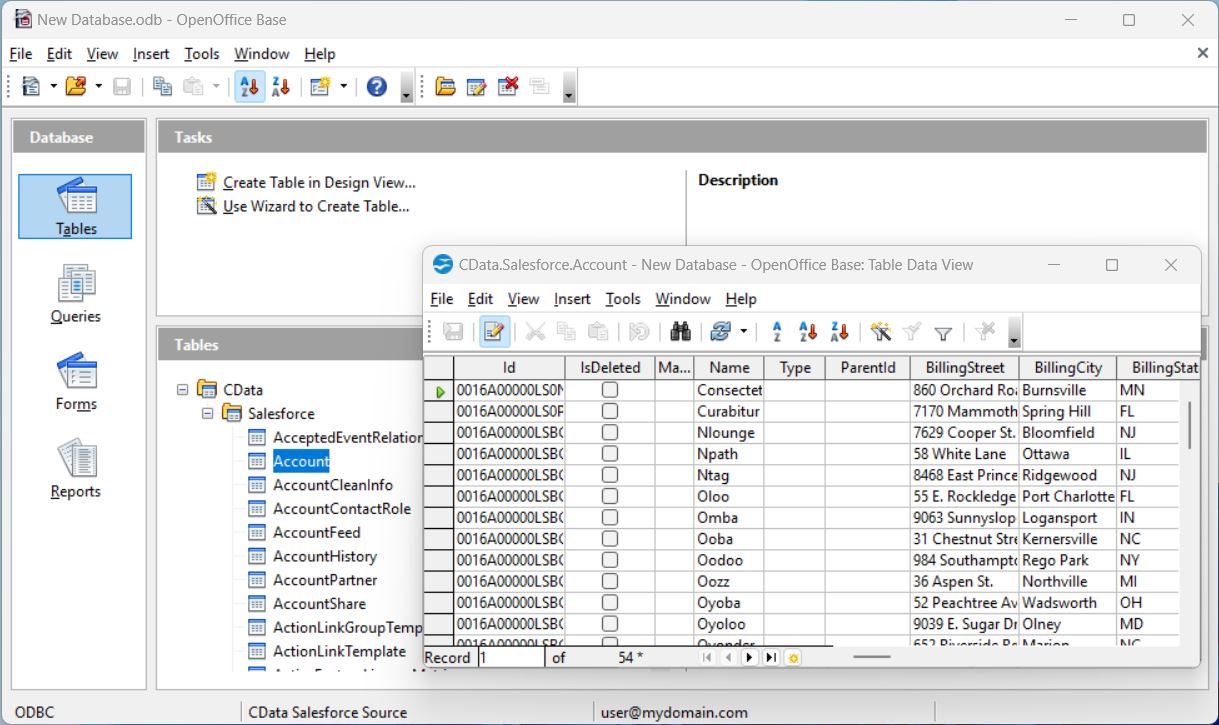
That's it! You have now successfully established a connection to SharePoint data in OpenOffice Base, with data readily available for analysis and reporting.
Create a Report
Now, let's generate a report based on your SharePoint data data.
- Open your database and go to the Reports tab, then select Create Report Using Wizard.
- In the Report Wizard, choose the SharePoint data table from the Table or Query section. Select the columns from Available Fields that you want to include in your report and move them to the Fields in Report section using the arrows.
- After configuring the fields, click Finish to generate your report.
- Analyze, adjust, save, and publish the report as needed.
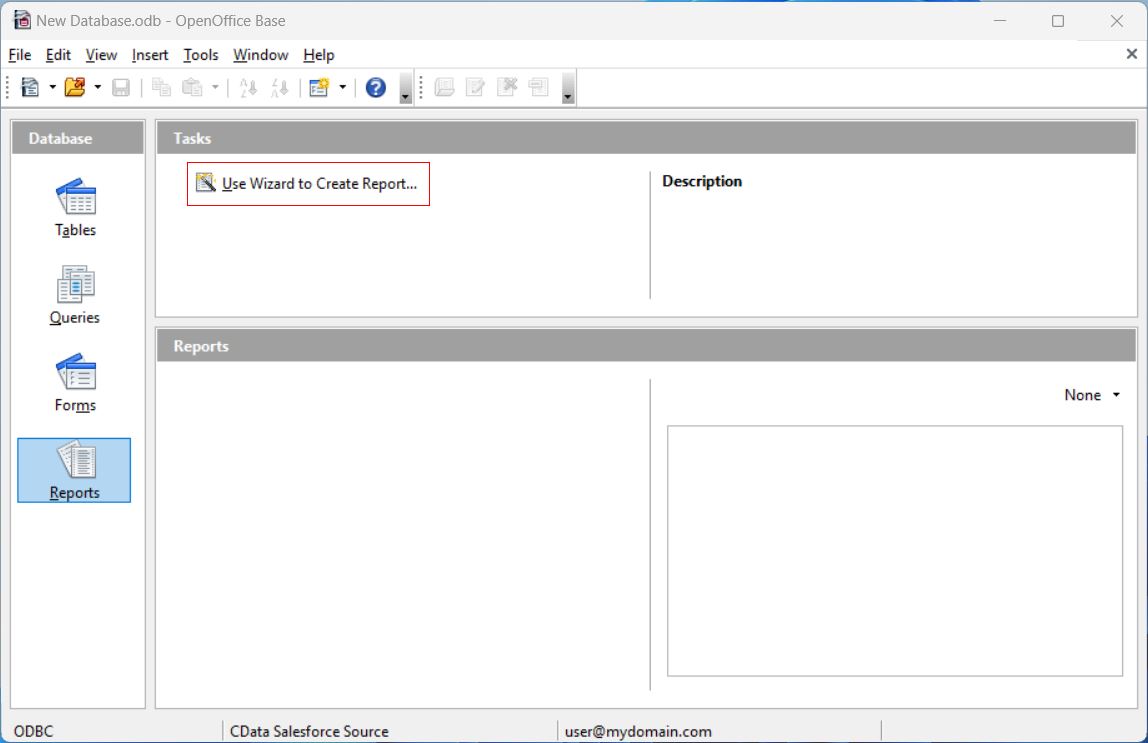
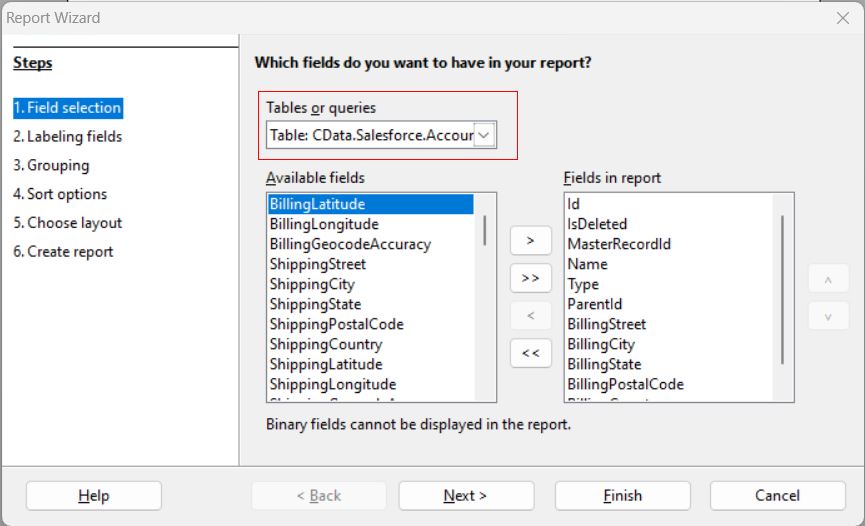
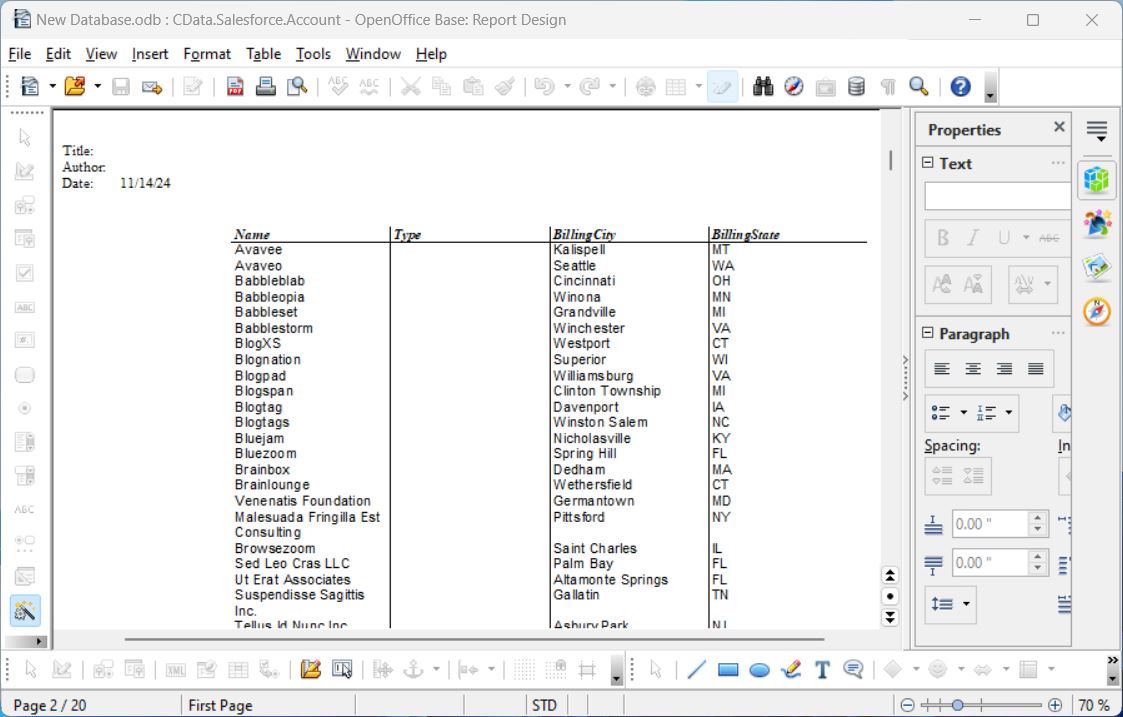
Your report is now created, drawing live data directly from SharePoint data, and ready for analysis.
Try CData Free for 30 Days
Experience the power of live SharePoint data data at your fingertips and seamlessly integrate it into OpenOffice Base. Start your free trial today!

